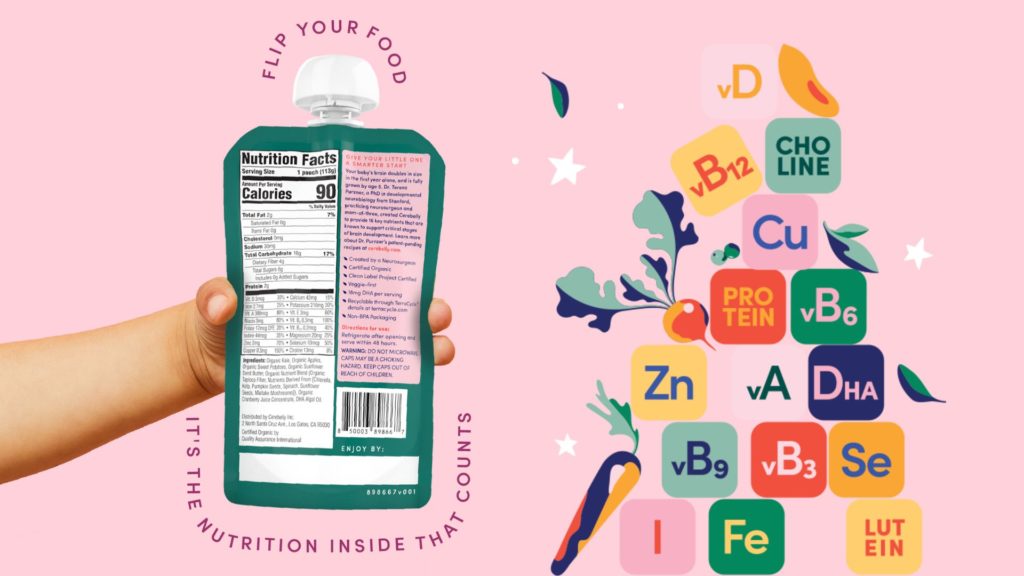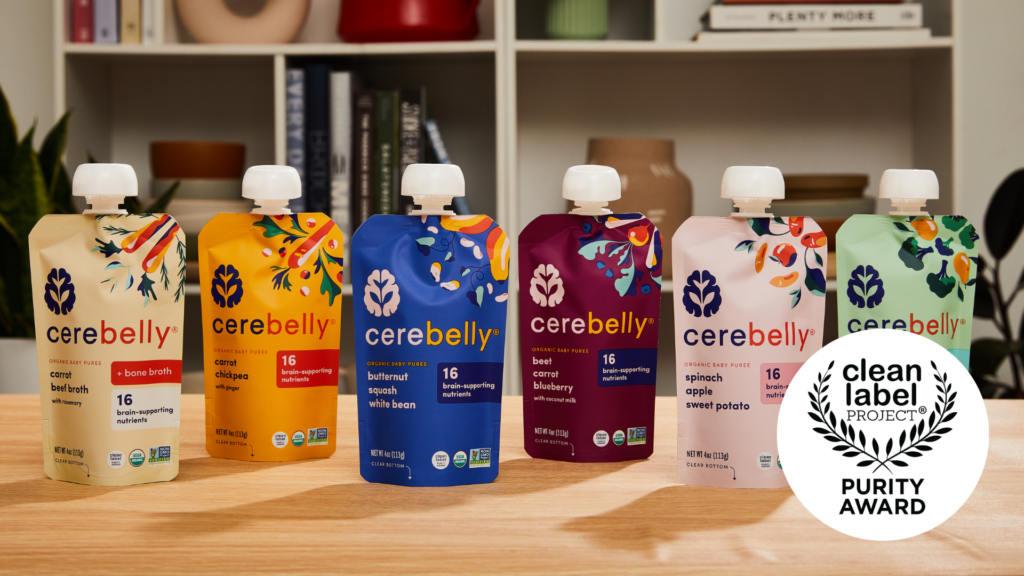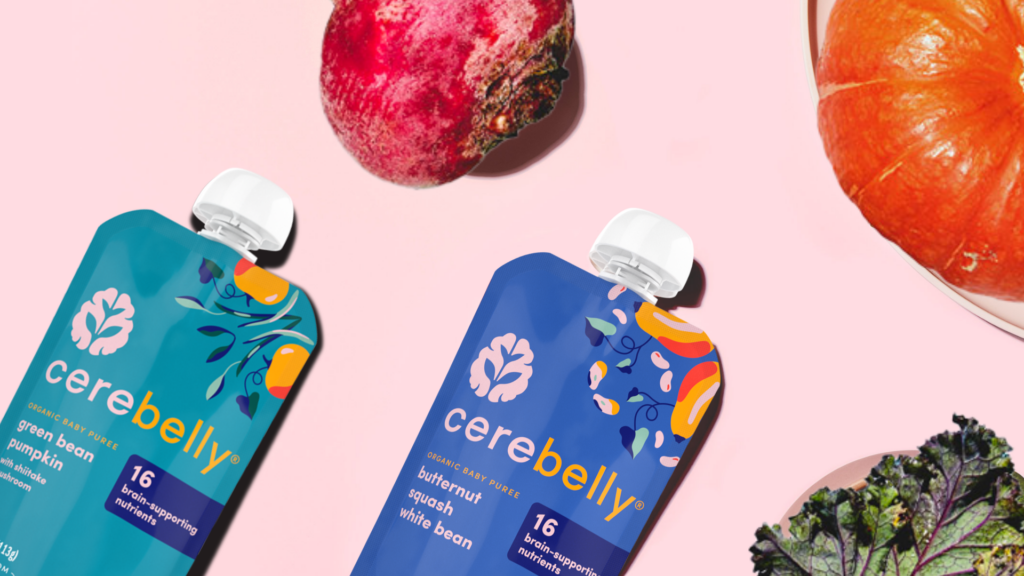Demystifying the Baby/Toddler Food Nutrition Label
What to look for and how to interpret it
Nourishing our babies is no small feat. Nutrition provides the building blocks, the fuel, the magic that helps them develop remarkably capable brain power and grow strong muscles and bones. Their small tummies and propensity to leave most of their food on their faces and highchairs means that every bit of food that makes it in their mouths is important.
How good does it feel when you know your baby has had a nourishing meal? I know, it’s a sense of relief that washes over you and wow does it ever make for a good day! So of course, you want to offer nourishing food. But that baby food aisle is daunting and confusing.
This article will help demystify those baby food nutrition labels and help you make the best choice for your kiddo.

The top 5 things to look for on a baby food nutrition label:
1. First take a look at the serving size.
The serving size is a standardized amount intended to help you compare the nutrition of similar products. It is not intended to be a recommended portion size to eat.
For example, if a puree pouch’s nutrition facts state the serving size is 113g (1 pouch), with 80 calories and 4 grams of protein, but your child only eats ¼ of the pouch, he is getting 20 calories and 1 gram of protein from his actual serving. And this applies to all the nutrients.
Keep in mind that the number of calories, amount of protein and all the other nutrients on the label are based on the serving size.
2. Look for “no added sugar”
When we talk about sugar in baby food, it’s important to note that natural sugars are different from added sugars. Natural sugar is lactose from milk and fructose from fruit. Added sugar is everything else.
It should say 0g added sugar.
3. Look at the first couple of ingredients
The first ingredients are the ones present in the highest quantity. Look for a nutrient dense vegetable or legume as the first ingredient. Usually, a nutrient dense vegetable is dark in color, like spinach, sweet potato or carrots. Do not be fooled by a product that has a nutrient dense veggie in the name or pictured on the package. If that ingredient is not in the first 3 ingredients, it’s not present in a meaningful amount.

4. Look for balanced nutrition
This means a source of protein, fat and fiber. A serving of baby or toddler food should ideally have 1-6 grams of protein, 1-3 grams of fat and 2-4 grams of fiber. If the food does not have a source of fat, it’s good to be aware of that and pair with a food that contains fat, such as full fat yogurt, cheese or avocado.
5. Look for iron and other brain-building vitamins and minerals
The label will tell you how nutrient dense a food is. Nourishing babies goes beyond one or two nutrients. So why settle for a food product that only has one or two? Look for 16 key nutrients that babies need for a growing body and brain, including omega 3 DHA, choline, copper, and folate.
Want to learn more about these nutrients and where to find them? Check out this article that defines those 16 nutrients.

How to interpret the rest of the label:
% Daily Value (DV) for fat and carbohydrate:
5% or less is a low amount, 20% or more is a high amount.
This percentage is based on the recommended amount of fat and carbohydrate intake per day for the age group specified.
Children 1-3 years old: Based on an average intake of 1000 calories per day, children in this age group are recommended to get 150g carbohydrates per day and 39g total fat per day*. These numbers are called the Daily Reference Values (DRVs).
Infants through 12 months of age: For this age group, the DRVs are 95g carbohydrates and 30g total fat per day*. On the label above, you can see that 2g total fat is equal to 7% of 30g. This is where the 7% comes from.
*Remember these numbers are averages and are NOT intended to be used by parents to count their child’s grams of carbohydrates, fat or calories. This information is provided to help you understand where the % DV comes from.
Total fat:
Includes all types of fat in the food, such as unsaturated fats, saturated fats and trans fats. Labels only need to tell us how much saturated and trans fats are in the serving of food, so it’s important to also look at the ingredient list to know if the food includes healthy fats.
Total carbohydrate:
Includes all types of carbohydrates in the food, such as dietary fiber, natural sugars, added sugars, and other complex or starch carbohydrates.
Dietary fiber:
Includes both soluble and insoluble fiber because most foods have both.
Children 1-3 years old – 19g recommended daily intake of fiber
Children 4-8 years old – 25g recommended daily intake of fiber
Protein:
Look at the amount of protein in grams on the label, then check the serving size to see if your child will be eating that amount. Remember if they will only eat half that amount, then they are only getting half the amount of protein. If offering the food for a meal, then it is important that you look for a source of protein, anywhere from 1-6g protein / serving. Keep in mind that it’s also important to know the source of the protein, so look at the ingredient list to help you.
A variety of different types of protein is best for kids. For toddlers and children, it should not JUST come from milk, breastmilk or formula. A quick method of knowing the minimum amount of protein your baby/toddler needs is about 1-1.5 x their weight (in kilograms).
% Daily value (DV) for vitamins and minerals:
To know if a product has a meaningful amount of a vitamin or mineral, look for double digits % DV.
What to do with this information
The baby food aisle is daunting. I know. Marketing baby food as being healthy but without the ACTUAL nutrition content to back it up is a huge problem in my professional opinion.
Flip your food – look at the label, compare. You will be surprised and empowered!
About
the author
Stacey Segal BScA, MSc, RD

Stacey is a pediatric dietitian and a mom of two little eaters. Her career has been dedicated to nourishing babies, toddlers and kids. She’s a staff dietitian at The Hospital for Sick Children, Toronto, specializing in neuroscience. Stacey is also the founder of the Prenatal and Pediatric Nutrition Clinic at GSH Medical, and a nutrition writer for AboutKidsHealth website. Being a mom herself, she has experienced the challenges that come with feeding kids. She’s passionate about helping families raise well nourished kids right from the start!
Have more questions? Send us an email at support@cerebelly.com and we will be sure to get back to you!



